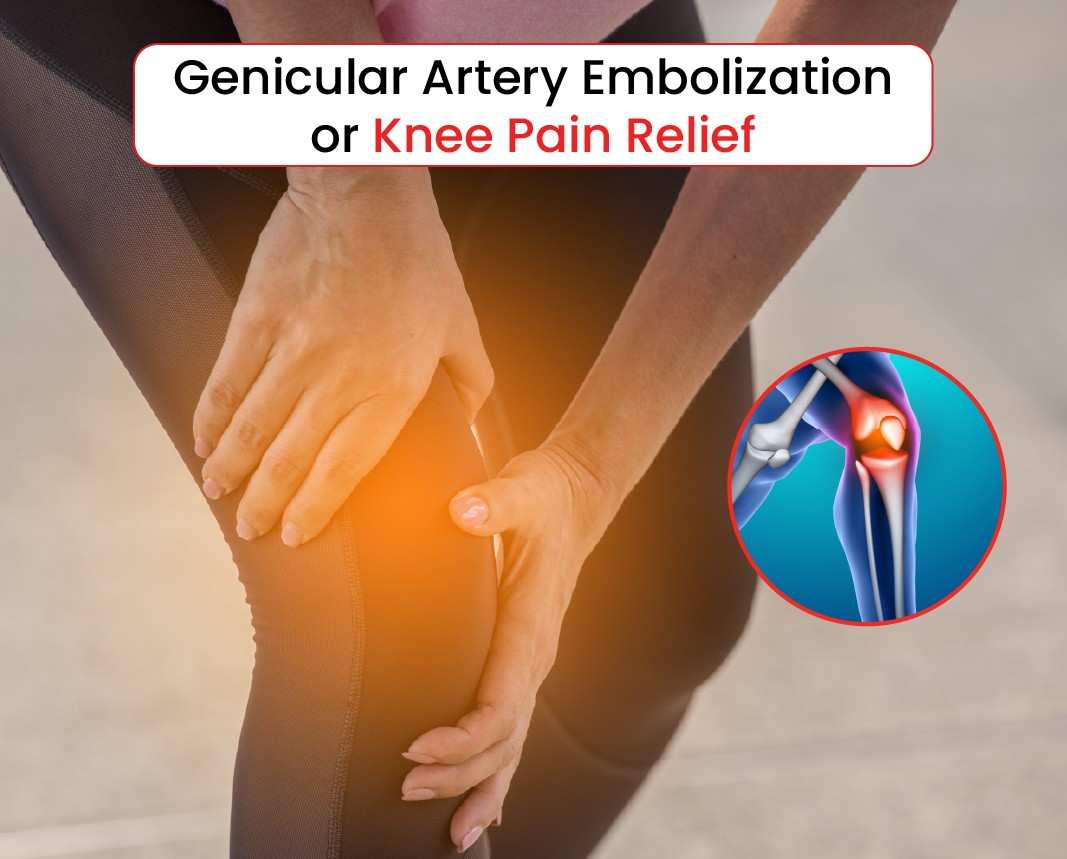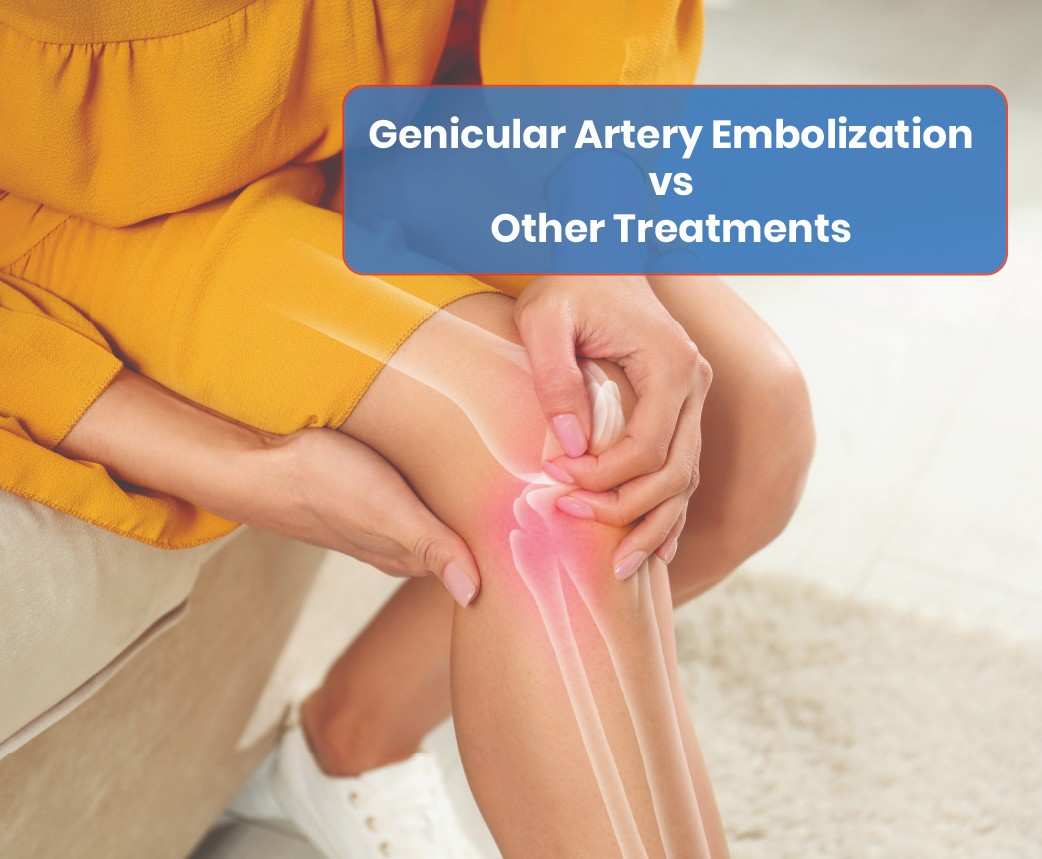Knee pain affects millions worldwide, especially as they age or engage in high-impact activities. Conditions like osteoarthritis (OA) are major contributors to chronic knee pain, causing discomfort, limited mobility, and a significant impact on daily life. Traditional treatment options range from physical therapy to joint replacement surgery, but these can either take time or pose greater risks, especially for older patients. In recent years, Genicular Artery Embolization (GAE) has emerged as an innovative, minimally invasive procedure offering a promising solution for patients seeking relief from chronic knee pain without surgery.
What is Genicular Artery Embolization?
Genicular Artery Embolization is a non-surgical procedure that targets specific blood vessels, called genicular arteries, supplying the knee joint. These arteries often become enlarged and inflamed in conditions like osteoarthritis, increasing blood flow to the area and contributing to inflammation and pain. GAE works by using small particles to block or “embolize” these arteries, reducing blood flow, which helps in minimizing inflammation and pain in the knee.
During the procedure, a small catheter is inserted through a puncture in the groin or wrist and guided to the genicular arteries. Tiny embolic particles are then injected through the catheter, selectively blocking the arteries feeding the inflamed joint tissues. The process is highly precise, targeting only the arteries associated with the pain, while leaving the rest of the knee’s blood flow intact.
Why Genicular Artery Embolization is the Need of the Hour
With knee osteoarthritis on the rise due to aging populations and lifestyle factors, there is an increasing need for effective, minimally invasive treatments. Traditional options for chronic knee pain, such as joint injections, medications, or surgery, come with limitations:
- Medications can lead to side effects, especially with long-term use, and may not offer sustained pain relief.
- Joint injections provide only temporary relief and must be repeated frequently.
- Knee replacement surgery can be effective but is invasive, costly, and requires extended recovery, which can be challenging for elderly patients or those with multiple health issues.
GAE presents a solution to bridge this gap. It is an outpatient procedure with minimal downtime, allowing patients to resume their daily activities quickly. For those who are not candidates for surgery or want to delay surgery, GAE offers an effective alternative for managing chronic knee pain.
Conditions Treated by Genicular Artery Embolization
The primary condition treated with GAE is osteoarthritis of the knee, particularly for patients with moderate to severe OA. However, GAE may also be beneficial for other types of knee pain linked to inflammation and increased blood flow, such as post-surgical pain, inflammatory arthritis, or tendinitis.
Osteoarthritis patients experience pain due to the breakdown of cartilage, which leads to joint friction and inflammation. The resulting pain signals trigger more blood flow, creating a cycle of inflammation that perpetuates discomfort. By blocking specific arteries, GAE disrupts this cycle, allowing patients relief without invasive surgery.
Expected Benefits of Genicular Artery Embolization
GAE offers numerous benefits, making it an attractive option for chronic knee pain relief:
- Significant Pain Reduction: Studies show that patients experience a significant decrease in pain within weeks, as inflammation subsides due to reduced blood flow.
- Minimally Invasive with Minimal Downtime: Unlike surgery, GAE requires only a small puncture in the skin, with no stitches or large incisions, allowing patients to return to their normal activities within days.
- Outpatient Procedure: GAE can be completed in a few hours, typically under local anesthesia, meaning patients can go home the same day.
- Reduced Need for Pain Medications: By targeting the inflammation source, GAE can help reduce reliance on medications, which is especially beneficial for patients who cannot tolerate long-term medication side effects.
- Delays or Avoids Surgery: For those who may not be ready for knee replacement surgery, GAE offers an effective way to manage pain, potentially delaying or eliminating the need for surgery.
- Low Risk of Complications: As a minimally invasive procedure, GAE carries a low risk of complications, with most patients experiencing mild discomfort after the procedure that resolves within a few days.
Genicular Artery Embolization is a cutting-edge solution for knee pain, particularly for those affected by osteoarthritis. With its minimally invasive approach, GAE provides effective, long-term pain relief, enabling patients to regain mobility and enjoy an improved quality of life without the burdens of traditional surgery or long-term medications. For patients looking for a sustainable way to manage knee pain, GAE is truly a groundbreaking option, addressing chronic discomfort in a safe and effective way.






